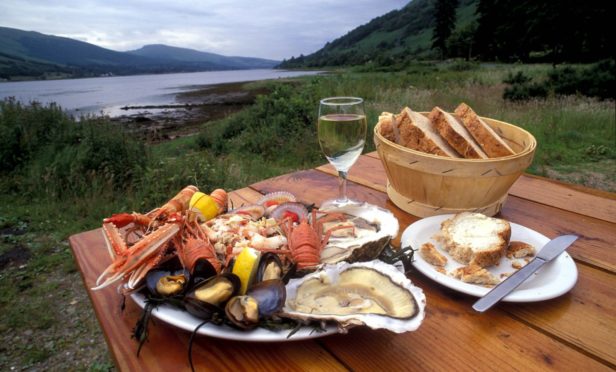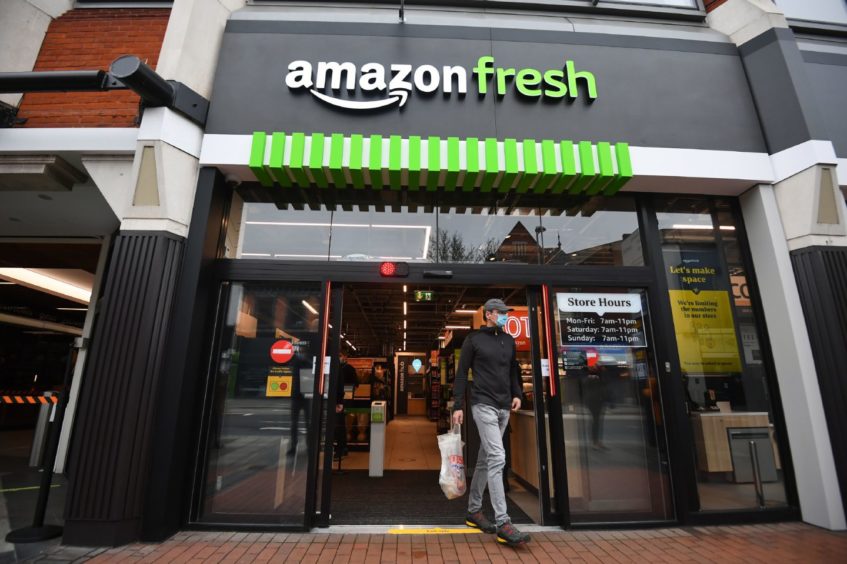The performance of the food and drink industry north of the border over the past 10 years has been nothing short of phenomenal.
It has been one of Scotland’s fastest-growing sectors and a major employer too. The nation has enjoyed huge economic growth both domestically and internationally, supported by our global reputation for quality and provenance.
And we had ambition to do more, go further and do it faster, and it felt like nothing could derail us – until the global pandemic.
The impact of Covid-19 has been profound for businesses the length and breadth of the country.
Overnight, our key markets across hospitality and exports effectively disappeared, with no certainty on when things would reopen.
For some firms, those markets were their only customers. Others were more fortunate and had the benefit of retail customers.
Had it not been for government support – and the incredible resilience and entrepreneurial spirit shown by our companies – the fate of many enterprises may have been different.
While it’s still too early to assess the true impact of Brexit for our industry, we already know it is adding cost, time and complexity to each and every business trading with an EU customer.”
It’s the above traits that give me great confidence for the future that the industry will make a fast recovery. Because what has not changed is our fantastic larder.
We are still the envy of the world, with our basket of produce unrivalled by any other country.
Our quality, provenance, heritage, production standards and reputation as a clean, green producer makes us unique – the task ahead is how we tell our story more loudly and impactfully in the face of stiff competition from other countries vying for market share.
And while we will no doubt look back on the past year as one of the most challenging periods in our history, we have seen many of our businesses adapt quickly to grasp new opportunities.
Seafood firm reacted swiftly
Ventures such as Amity Fish Company – a small, quality seafood wholesaler in Peterhead typically supplying high-end restaurants and hotels.
With its customers effectively gone overnight because of lockdown restrictions, the firm had to adapt or close its doors.
Noting the growth in e-commerce and selling direct to consumers, Amity rapidly changed its business model to focus on that opportunity – and began offering a home-delivery service across the UK. This has led to increased sales and an almost trebling of the workforce.
The emergence of e-commerce as a route to market for food and drink producers could be one of the most significant legacies of the pandemic.
We have known for some time that e-commerce would likely be a key channel for selling produce in the future, but the virus has accelerated that move for many firms.
Retailers are reporting record online sales – Ocado and Amazon Fresh’s food offerings are growing quickly – and selling direct to consumers is a growing trend.
There’s also a renewed sense of community and support for local food and drink businesses.
Consumers across Scotland are telling us they feel more connected to and trusting of local producers than ever before and we must capitalise on this opportunity – whether through retail markets, in cafes and restaurants, schools and hospitals, or through direct sales.
So as an industry we will redouble our efforts to showcase the very best of Scotland’s larder to Scottish and UK consumers.
But we must also keep a focus on regaining our lucrative export markets that have been disrupted or lost over the past year, particularly since January 1 as we entered into a new trading arrangement with the EU.
Brexit
While it’s still too early to assess the true impact of Brexit for our industry, we already know it is adding cost, time and complexity to each and every business trading with an EU customer.
Of course, new international trade deals continue to be lauded by the UK Government but, despite the headlines, this must be tempered with realism.
We are seeing new trade deals can be potentially negotiated quickly, but at what cost
And, even when there are opportunities in those markets, it will take time to realise them as businesses seek to develop relations, comply with local regulations, develop supply chains, and build some market presence and loyalty.
Sharp slump in export sales for Scottish food and drink icons
Region’s firms feature heavily in first intake of innovative new scheme for food and drink producers
New trade deals, while having their own merits, need to be approached with caution and given the proper scrutiny they need if they’re going to be effective in the long term.
Equally, as global awareness of and action around the climate emergency grow, our reputation as a sustainable food-producing nation is an incredibly valuable international asset.
We are by no means perfect on the sustainability and environmental front but, as a largely premium producer of food and drink rather than the mass-production systems in other parts of the world, we’re well-placed to take advantage of consumer demand for more sustainable produce.
‘Huge possibilities’
So while the pressures of the pandemic and stilted international trade show no real signs of abating, we will not stand still.
Scotland Food & Drink will continue to work in partnership with other industry bodies through our recovery plan, which has a series of actions to support the industry’s rapid recovery.
The equity of the Scottish brand is rising with global and domestic consumers, and there are huge possibilities out there for us.
There are no doubt tough times still ahead, but with the concerted effort of our outstanding food and drink businesses, the people who make it so great, and with government support to put the sector at the heart of the economic recovery plan, there is no reason that we can’t look forward to a brighter future for all.
John Davidson is strategy and external relations director at industry leadership partnership Scotland Food & Drink.



